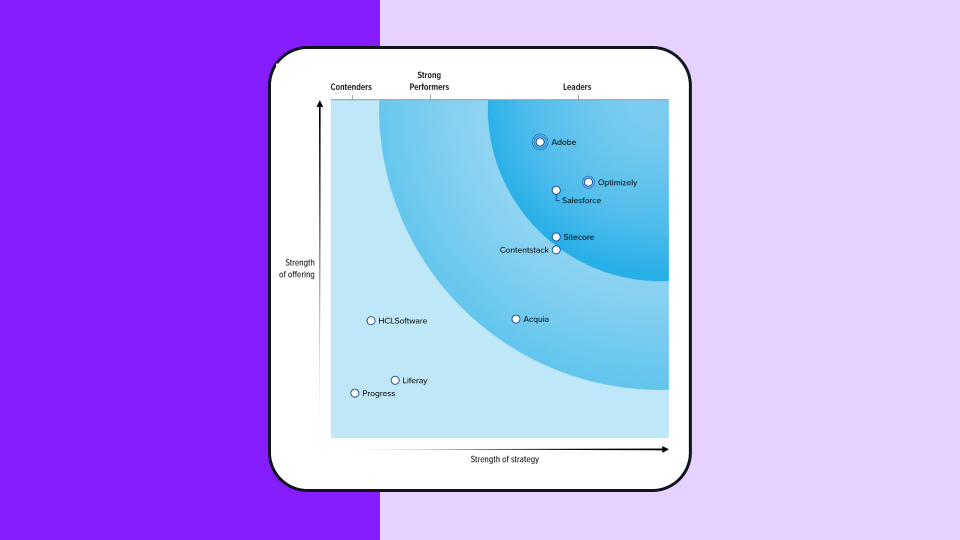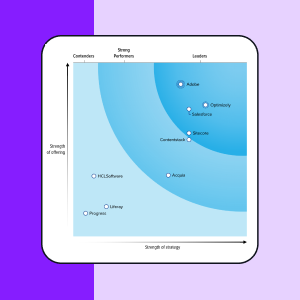Ramverk för experimentering
Vad är ett ramverk för experimentering?
Ett ramverk för experimentering är ett systematiskt tillvägagångssätt för att testa olika versioner av en produkt eller funktion för att avgöra vilken som fungerar bäst. Det är en datadriven process som hjälper företag att fatta välgrundade beslut om sina produktutvecklings- och marknadsföringsstrategier. Som en aktiv del av ett program för experimentering används de i hög grad av produktteam och utvecklingsteam.
Produktexperimentering består av en uppsättning riktlinjer och metoder som organisationer använder för att genomföra experiment och optimera sina produkter. Det handlar om att jämföra olika versioner av en produkt mot varandra för att isolera och börja genomföra test av funktion för varje funktion. Kort sagt, identifiera de resultatindikatorer som ska mätas, utveckla en hypotes, utforma experimentet och analysera resultaten.
Resultaten mäts sedan med hjälp av nyckeltal, till exempel konverteringsgrad, förmåga att behålla kunder, kundengagemang med mera. Genom att förstå hur kunder interagerar med produkter kan företag optimera sina erbjudanden och bättre tillgodose kundernas behov. Det hjälper företag att minimera risker, skapa bättre användarresor och generera mer intäkter på kortare tid.
Hur fungerar ett ramverk för experimentering?
Genom att ha ett ramverk för experimentering kan organisationer prioritera och snabbt lansera nya produkter eller tjänster utan att lägga för mycket tid eller resurser på utvecklingen. Detta tillvägagångssätt bidrar till att säkerställa att endast de mest framgångsrika funktionerna implementeras samtidigt som det ger värdefull feedback om vad kunderna värdesätter mest när det gäller deras användarupplevelse.
Låt oss ta ett exempel på ett ramverk för A/B-testning som du kan använda:
-
Samla in data
Använd ett analysverktyg, t.ex. Google Analytics, för att identifiera de delar av webbplatsen eller appen som får mycket trafik. Var uppmärksam på sidor med hög bounce rate eller hög drop-off rate och gör målgruppsinriktade förbättringar på dessa. Överväg också att använda värmekartor, feedback från sociala medier och enkäter för att upptäcka nya förbättringsmöjligheter. -
Fastställ mål
Definiera de mätvärden som ska avgöra hur framgångsrik en variation är jämfört med originalversionen. Målen kan variera och kan omfatta åtgärder som knapptryckningar eller produktköp under en viss tid. -
Utveckla hypoteser
När du har fastställt målen kan du ta fram idéer för A/B-testning och förklara varför du tror att de föreslagna ändringarna kommer att ge bättre resultat än den nuvarande versionen. Prioritera dessa idéer utifrån deras förväntade effekt och hur komplicerade de är att genomföra. -
Skapa variationer
Gör justeringar av specifika delar av din webbplats eller mobilapp. Dessa ändringar kan omfatta ändring av knappfärger, omarrangemang av sidelement, dolda navigeringselement eller implementering av anpassade ändringar. Det är viktigt att du testar ditt experiment noggrant för att säkerställa att de olika versionerna fungerar som avsett. -
Verkställ
Starta experimentet och vänta på att besökarna ska delta. När du har skickat besökare till din webbplats kommer de att slumpmässigt tilldelas antingen kontrollversionen eller en variation av din upplevelse. Övervaka deras interaktion med varje version, registrera data och jämför dem med baslinjen för att utvärdera prestanda. -
Validering av resultat
Beroende på hur stor din målgruppsinriktning är kan det ta lite tid att få fram statistiskt signifikanta resultat. Tillförlitliga resultat från experimentet visar när resultaten har nått statistisk signifikans, eftersom det annars skulle vara svårt att avgöra om dina förändringar verkligen har haft någon effekt.
Om du märker en mätbar skillnad i prestanda mellan testversionerna kan du tillämpa insikterna på andra sidor på webbplatsen med fokus på konverteringsoptimering (CRO)
Men om ditt experiment inte ger något tydligt resultat, se experimentdesignen som en lärande upplevelse och skapa nya hypoteser att testa i framtida experiment.
Varför är ramverket för experimentering viktigt?
Produktexperimentering hjälper dig att identifiera och iterera vilka versioner av en produkt eller funktion som är mest effektiva för att uppnå önskade resultat, till exempel att öka kundengagemanget, driva konverteringar eller förbättra kundnöjdheten.
Baserat på resultaten av experiment kan detta tillvägagångssätt hjälpa företag att minska sannolikheten för kostsamma misstag och förbättra kundupplevelsen. Du kan göra följande:
- Fatta datadrivna beslut: Möjliggöra välgrundade beslut baserade på solida bevis och data.
- Förbättra användarupplevelsen: Förbättra användarnöjdheten, användarengagemanget och konverteringsgraden.
- Minska riskerna: Identifiera potentiella negativa effekter eller problem före implementeringen.
- Optimera resurser: Tilldela resurser till initiativ med högre potential.
- Se evidensbaserade insikter: Ge en objektiv utvärdering av användarnas beteende och preferenser.
- Ha snabbare time to market: Påskynda implementeringen av framgångsrika förändringar eller funktioner.
- Bygga skalbara system: Tillämpbara på olika plattformar och kontaktpunkter.
- Anpassa till affärsmålen: Se till att experimentering är kopplad till strategiska mål.
- Främja innovation och kreativitet: Uppmuntra utforskande av nya idéer och lösningar.
Olika typer av ramverk för experimentering av funktioner eller produkter
Om du vill bygga upp en experimenteringskultur i realtid kan flera typer av ramverk för experimentering fungera som utgångspunkt, t.ex:
- A/B-testning
Ett ramverk för A/B-testning innebär att man testar två versioner av en produkt eller funktion med en enda variabel som ändras mellan dem. Kör experiment med hjälp av baslinjemätvärden för att samla in data. Du kanske till exempel vill testa en landningssida eller startsida på din webbplats med två olika rubriker eller en call to action (CTA) för att se vilken som fungerar bättre och får fler klick. - Multivariat testning
Ett ramverk för multivariat testning innebär att flera variabler testas i flera versioner av en produkt eller funktion. Ett företag kan till exempel testa flera olika versioner av en produktsida med olika kombinationer av färger, layouter och meddelanden för att avgöra vilken kombination som fungerar bäst. - Lean hypothesis testing
Ramverket för experimentering med lean är utformat för att testa nya idéer snabbt och billigt. Det innebär att man skapar en MVP (Minimum Viable Product) som bara innehåller de viktigaste funktionerna som krävs för att testa hypotesen. MVP:n testas sedan med en liten grupp användare och feedbacken används för att förbättra produkten. - Användartestning
Ramverket för användartestning innebär att man samlar in feedback från intressenter om varianter av en produkt eller funktioner genom enkäter, fokusgrupper eller användartestsessioner. Det hjälper dig att identifiera potentiella användbarhetsproblem eller områden som behöver förbättras.
Optimizely och ramverk för experimentering
Att ha ett ramverk för experimentering är en kritisk komponent i produktutveckling och marknadsföring. Det gör det möjligt för företag att testa nya idéer som använder datadrivet beslutsfattande för maximalt användarengagemang och tillfredsställelse. Genom att använda ett ramverk för experimentering kan företag minska riskerna och skapa bättre användarresor och checkout-alternativ för att öka intäkterna och kundlojaliteten.
Med Optimizely Data Platform kan du njuta av alla funktioner i ett ramverk som du vill ha tillsammans med pålitlig och snabb data från statsmotorn. Validera dina resultat och vet att du har rätt produkter som levererar det bästa värdet till dina kunder. Kom igång här för att se hur feature experimentation verkligen fungerar.

